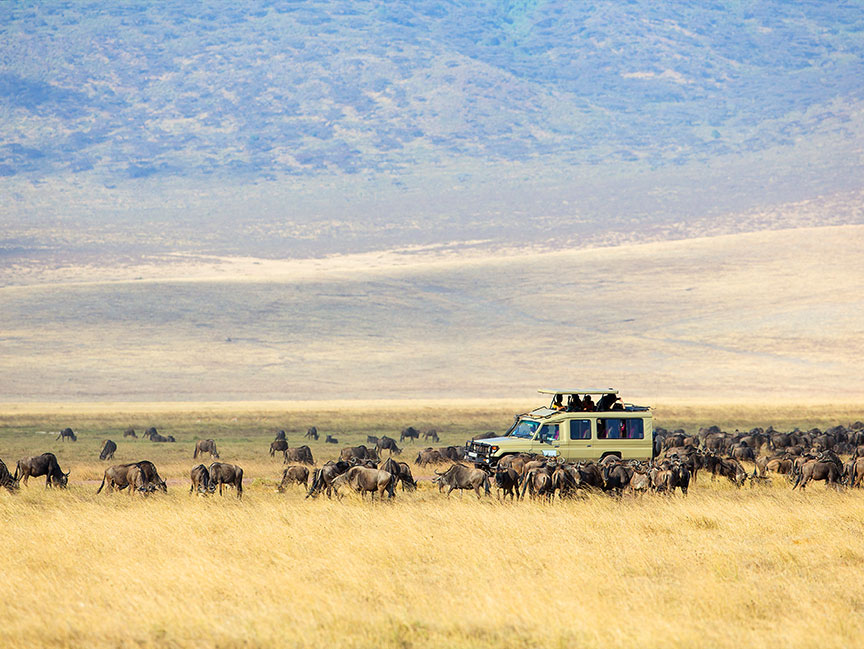THE Great Annual Wildebeest Migration Month by Month Timetable .
The Migration Monthly Timetable is to be used as a Guide. The Migration Pattern varies from one year to the next, as it all depends on the start of the rains.
The Great Migration is an annual migration of millions of wildebeests into Tanzania. A million wildebeest… each one driven by the same ancient rhythm, fulfilling its instinctive role in the inescapable cycle of life: a frenzied three-week bout of territorial conquests and mating; survival of the fittest as 40km (25 miles) long columns plunge through crocodile-infested waters on the annual exodus north; replenishing the species in a brief population explosion that produces more than 8,000 calves daily before the 1,000 km (600 miles) pilgrimage begins again.
The Great Migration showcases nature in its most raw form: as herds of animals move across the plains of Africa, through dangerous rivers and over beautiful landscapes, you will be enraptured by Africa.
It is worth noting that the Great Migration in the Serengeti National Park takes place all year in some form. Due to its massive size it is possible to meet herds of wildebeests in different parts of the park.
JANUARY
The migration is concentrated in the south-eastern Serengeti National Park, spilling over into the Ngorongoro Crater the wildebeest start to give birth
FEBRUARY
The short-grass plains are the main feeding ground for over 1.7 million wildebeest, 800,000 zebra, and many gazelle. Predators follow close by, feeding on the newly born. There is plenty of food for the predators at this time. This is the main month for wildebeest births. The great herds are on the move towards the Ndutu Woodlands. This month is also known as the calving season.
MARCH
The commencement of long and heavy rains is the time when the fresh grass is now depleted from several months of grazing and newborn wildebeest are strong enough to move and keep up with the migration. Now is when the migration heads westwards towards Maswa Game reserve in search of better grazing.
APRIL/MAY
The heaviest rainy month and the herds are in the Maswa area, with the Wildebeest being almost evenly scattered in the region, although it is not a great month to view them as the region is very wet and roads are often impassable.
JUNE
Rains come to an end and the herds start migrating northward, crossing the Grumeti River, where many wildebeest and zebra lose their lives every year but provide a yearly feast for the huge crocodiles who wait at the popular crossing points. This is a popular time for sighting the large cats. July /August All going on schedule, the migration should now be in the northern Serengeti crossing over to Kenya’s Masai Mara.
JULY/AUGUST
Regarded as the best months to see the River Crossing on the Mara River from Masai Mara, offering fantastic photographic opportunities.
SEPTEMBER
The migration should now be in Kenya’s Masai Mara Nature Reserve just across the northern border from the Serengeti National Park. This is the best said to be the best time to visit Masai Mara.
OCTOBER
The time when Maasai Mara Nature Reserve having plentiful supplies of water and good grazing, hence a popular month to view the great herds in the Masai Mara.
NOVEMBER
If the short rains come this month, the migrating herds of Wildebeest, Zebra, and Gazelle will start to head southwards, out of the Masai Mara National Reserve, crossing Kenya’s border into Tanzania’s Serengeti National Park.
DECEMBER
Usually, the migration will now be arriving on Serengeti’s Southern Plains, where there is an abundance of new, fresh young grass to feed on. When the migration heads southward to Southern Serengeti, the migrating zebras begin to give birth.


